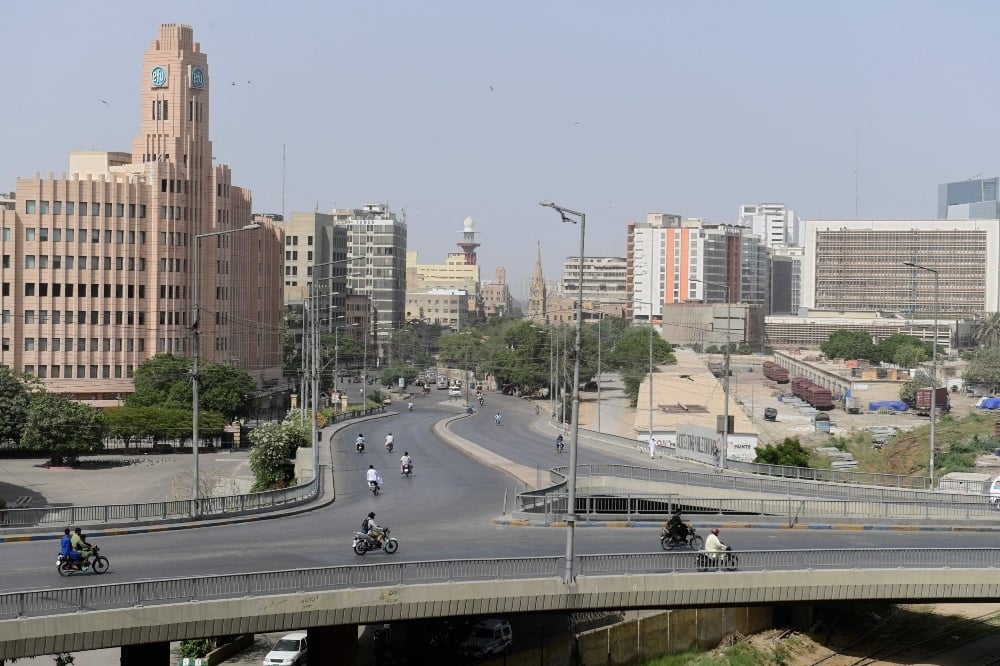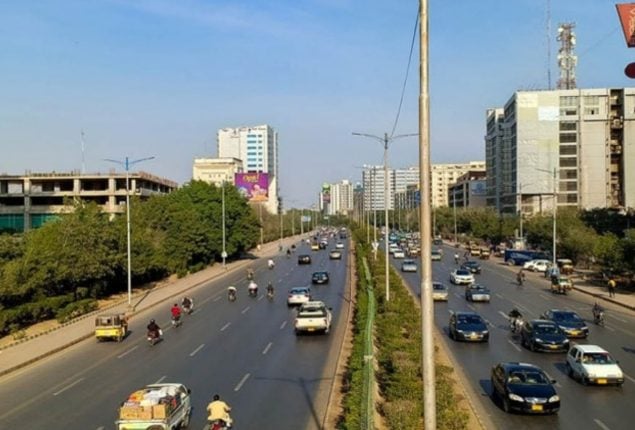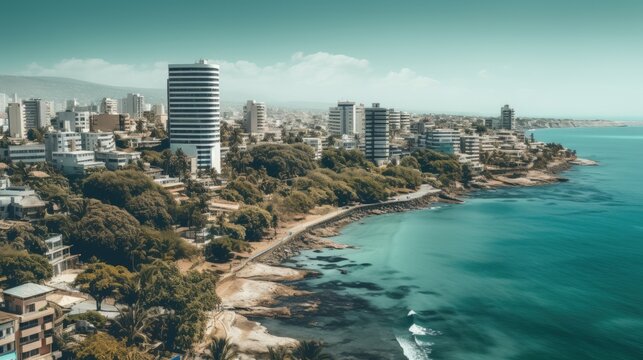Karachi, Is the largest city of Pakistan and a major economic hub and is located along the Arabian Sea. Its strategic coastal position greatly influences its weather patterns. With a mainly hot desert climate, Karachi experiences well defined seasonal variations, making it a city of extremes. This article will lead you to an overview of Karachi`s weather changes throughout the year, examining its seasons, temperature, variations, humidity levels and climate changes.
Climate Classification
Karachi`s climate is classified as a hot desert climate under the Köppen climate classification. This classification is characterized by low annual rainfall and high temperatures, mostly in the summer months. Karachi`s geographical features (being surrounded by water on one side and the plains of Sindh on the other sides) also contribute to its unique climate conditions.
Seasonal Breakdown
Here is a look into the effects of seasonal changes on Karachi`s weather:
- Summer (April to June)
The summer season in Karachi typically extends from April to June. In these months temperature are mostly exceeding 35°C (95°F). April marks the beginning of rising temperatures. May is usually the hottest month, with daytime temperatures rising to 40°C (104°F) or higher. The intense heat often worsens by high humidity levels.
Along with the cruel heat, Karachi also enjoys a refreshing sea breeze that provides some relief in the evenings. Dust storms are also common during this period, often occurring in afternoons when hot air rises and creates shaking conditions.
- Monsoon (July to September)
The monsoon season in Karachi usually starts in July and continues till September. This brings a break from the summer heat. Karachi receives most of its annual rainfall during these months, with July being particularly wet. Average temperatures during monsoon range from 30°C to 33°C (86°F to 91°F).
rainfall in Karachi can be unpredictable. Some years witness heavy rains while other may experience lighter rains. The monsoon can lead to flooding in low-lying areas, this causes serious damages to infrastructure and also disrupts transportation. The increase in humidity during this season can also make the air feel heavy and suffocating, although the rain provides some cooling effect.
- Autumn (October to November)
As the monsoon season goes away, Karachi enters a transition that is marked by autumn, which lasts from October to November. This period consists of mainly cooling temperatures and decreased humidity. October is often regarded as one of the most pleasant months, with temperatures ranging from 25°C to 30°C (77°F to 86°F). The days are sunny while the nights are cool, making it an ideal time for outdoor activities and festivals.
November marks the start of cool weather, with temperature continuing to drop. The humidity levels also decrease significantly, leading to a more comfortable atmosphere to live. Many residents take advantage of this pleasant weather and engage with various recreational activities, such as picnics and outdoor sports.
- Winter (December to February)
Winters in Karachi are mild, as compared to other regions of Pakistan, ranging from 10°C to 25°C (50°F to 77°F), starting from December to February. January is the coldest month in this regard.
Daytime weather is generally sunny while nighttime weather drops, these changes make this month the resident`s favorite.
Karachi`s winters consist of clear skies and gentle wind that provides a beautiful atmosphere for outdoor events and activities. This is also the peak tourist season, with many people visiting the city to enjoy moderate climate.
Humidity and Wind Patterns
Karachi`s weather is importantly influenced by its humidity levels. This city experiences high humidity mostly during summers and monsoon season. Humidity levels can range from 60% to 90%, that often leads to discomfort during the hotter months. The Arabian Sea plays an important role in regulating the city`s humidity.
Wind patterns in Karachi are also noteworthy. During summers, hot winds blow from the land towards the sea, while the sea breeze comes in during the evenings. These patterns create a changing weather environment.
Climate Challenges
There are a number of climatic challenges that Karachi faces due to its weather. Given below are some of these challenges;
- Urbanization: Urbanization refers to the process of making a city urban. Quick urbanization or civilization has led to increased pollution and heat control, worsening the city`s already high temperatures. The expansion of concrete structures and reduced green spaces contributes to the urban heat island effect.
- Water Scarcity: The day by day increase in Karachi`s pollution has put a huge pressure on its water resources. Seasonal rainfall can lead to temporarily flooding, but the overall scarcity of freshwater is a persistent issue, especially during dry months
- Infrastructure Vulnerability: Heavy monsoon rains can overwhelm drainage systems, leading to flooding in low-lying areas. The infrastructure struggles to cope with sudden changes, highlighting the need for improved urban planning and management.
- Heat Waves: Karachi occasionally experiences severe heat waves that pose with health risks , mostly to vulnerable populations. These events highlight the importance of public health awareness and preparedness strategies.
Conclusions
Karachi`s weather is a complex interplay of climatic factors that are shaped by the above mentioned points. Understanding Karachi weather patterns is essential for the residents as well as the visitors, as this influences daily life, outdoor activities, and infrastructure planning.
As Karachi is continuously growing and evolving, keeping in view the challenges faced by its climate is crucial for ensuring a sustainable and livable environment for the present as well as the future generations. Whether you are enjoying the pleasant winter days or navigating the challenges of summer, the weather remains an essential aspect of life in this vibrant coastal city.
Frequently Asked Questions (FAQs)
1. What is the climate of Karachi?
Karachi has a hot desert climate characterized by high temperatures and low rainfall. It experiences distinct seasons: hot summers, a brief monsoon, mild winters, and transitional autumn.
2. When is the hottest time of the year in Karachi?
The hottest months are typically May and June, with temperatures often exceeding 40°C (104°F).
3. How much rain does Karachi receive during the monsoon?
Karachi receives most of its annual rainfall during the monsoon season, which lasts from July to September. Average rainfall can vary, but July is often the wettest month, with significant rainfall.
4. What is the best time to visit Karachi?
The best time to visit Karachi is during the winter months (December to February) when the weather is mild and pleasant, making it ideal for outdoor activities and sightseeing.
5. What are the average winter temperatures in Karachi?
During winter (December to February), daytime temperatures typically range from 10°C to 25°C (50°F to 77°F). January is usually the coldest month.
6. How does climate change impact Karachi’s weather?
Climate change is likely to exacerbate existing weather patterns, potentially leading to more severe heat waves, erratic rainfall, and increased flooding risks, highlighting the need for sustainable urban planning and management.
If you have any more specific questions or need further information, feel free to ask!


